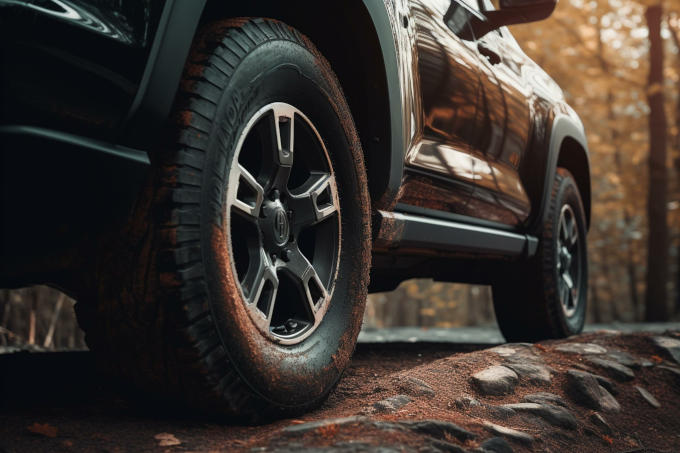Maintaining and caring for your vehicle's transmission is crucial for its long-term performance and reliability. When it comes to 4WD (four-wheel drive) and AWD (all-wheel drive) vehicles, their unique transmission systems require special attention to ensure optimal functionality. These drivetrains enhance traction and control, making them popular for off-road adventures and challenging driving conditions. This article explores the unique maintenance and care requirements of 4WD and AWD transmissions, discussing key factors such as fluid changes, differential servicing, and preventive measures to keep your vehicle running smoothly and maximize its capabilities in diverse terrains.
What Is the Difference Between 2WD, 4WD, and AWD Systems?
Each system has its own advantages and is suited to different driving needs and conditions. Here is a quick breakdown of these systems:
Two-Wheel Drive (2WD):
In a 2WD system, power is typically transmitted to either the front wheels (front-wheel drive) or the rear wheels (rear-wheel drive). The non-driven wheels are responsible for steering, while the driven wheels provide power for propulsion. This configuration is commonly found in most passenger cars and some light trucks. The advantage of 2WD systems is their simplicity, as they have fewer components and often offer improved fuel efficiency under normal driving conditions. However, they may have traction and handling limitations in challenging road conditions.
Four-Wheel Drive (4WD):
4WD systems are primarily designed for improved traction and off-road capabilities. In a traditional 4WD system, power is transmitted to all four wheels simultaneously. These systems often feature a transfer case, allowing the driver to choose between 2WD (rear-wheel drive or front-wheel drive) and 4WD (power distributed to all four wheels). When engaged in 4WD mode, power is split equally between the front and rear axles, providing enhanced traction in challenging conditions such as off-road trails, snow, or mud. 4WD systems are commonly found in larger SUVs, trucks, and vehicles intended for off-road adventures.
All-Wheel Drive (AWD):
AWD systems operate continuously, distributing power to all four wheels automatically. Unlike traditional 4WD systems, AWD systems do not typically have a transfer case or driver-selectable modes. Instead, they use various sensors to monitor road conditions and distribute power between the wheels that have the most traction. In normal driving situations, power is primarily sent to either the front or rear wheels, depending on the specific AWD system's design. However, if slip is detected at any wheel, the system can redistribute power to other wheels with better traction. This continuous and automated power distribution ensures improved handling and stability on various surfaces. AWD systems have gained popularity in many crossover SUVs and performance vehicles, offering enhanced traction and stability without driver intervention.
What Are the Unique Transmission Needs of 4WD and AWD Vehicles?
4WD and AWD transmissions require specific maintenance and service to ensure longevity and reliability. Driving conditions that are more common for these vehicles, such as off-roading or towing, can significantly impact maintenance needs. These demanding driving conditions place additional stress on the transmission, which may require more frequent maintenance to ensure proper operation and longevity.
Here are 9 tips to keep these types of transmissions in good shape.
- Fluid changes
Regular fluid changes are essential for both AWD and 4WD transmission systems. This process includes changing the transmission fluid, transfer case fluid, and differential fluids according to the manufacturer's recommended intervals. Fresh fluids ensure proper lubrication, cooling, and protection of the transmission components.
- Fluid level checks
Regularly checking the fluid levels in the transmission, transfer case, and differentials is important for both AWD and 4WD vehicles. Low fluid levels can lead to inadequate lubrication and increased wear. If you notice any fluid leaks or a significant drop in fluid levels, it is essential to have the system inspected and repaired promptly.
- Seal Inspections
The seals in the AWD and 4WD transmission systems, such as those found in the transfer case and differentials, should be inspected regularly for signs of leaks or damage. Faulty seals can result in fluid leaks and potential damage to the transmission components. If any leaks or seal damage is detected, it should be addressed promptly.
- Differential servicing
Both AWD and 4WD vehicles may have differentials that require regular servicing. This includes checking and changing the differential fluids, inspecting the gears and bearings for wear, and ensuring proper adjustment of any limited-slip or locking differential mechanisms.
- CV joint maintenance
AWD and 4WD vehicles often utilize Constant Velocity (CV) joints in the driveline. These joints require regular inspection and maintenance. The CV joint boots should be checked for damage or tears and ensure they are properly lubricated. Damaged boots should be replaced to prevent dirt and moisture from entering the joints.
- Tire rotations
Regular tire rotations are crucial for both AWD and 4WD vehicles. Since these systems distribute power to multiple wheels, uneven tire wear can affect the drivetrain components and overall performance. Follow the manufacturer's recommended tire rotation intervals to ensure balanced wear and optimize system performance.
- Wheel alignment and balance
Proper wheel alignment and balancing are important for both AWD and 4WD vehicles. Misaligned or unbalanced wheels can cause additional stress on the transmission and drivetrain components. Regularly check and correct wheel alignment and balance to ensure optimal performance and minimize unnecessary strain.
- Follow the manufacturer's recommendations
It is crucial to adhere to the manufacturer's specific maintenance schedule and recommendations for your AWD or 4WD vehicle. Consult the owner's manual or contact a certified transmission repair center for guidance on service intervals, inspections, and any unique requirements or recommendations for your specific system.
- Regular inspections
Regular maintenance of 4WD and AWD transmissions is essential due to the additional complexity of these systems compared to traditional two-wheel drive transmissions. 4WD and AWD transmissions often have more components, including additional transfer cases, differentials, and drive shafts, which require regular maintenance to ensure proper operation. Additionally, the increased torque and power distribution demands on these transmissions can lead to increased wear and tear, making routine maintenance even more critical.
Related Articles:
- Transmission Maintenance Do’s and Don’ts in Southern California
- 8 Easy Ways To Stress Your Transmission
Start Your Adventures With a Healthy Transmission
It's no surprise that AWD and 4WD vehicles have gained immense popularity among car enthusiasts and adventure seekers alike, especially here in Southern California. The diverse landscapes, from sandy beaches to rugged mountain trails, call for vehicles that can confidently conquer any terrain. However, it is vital to understand the unique transmission needs of these vehicles to ensure their longevity and optimal performance, particularly in the demanding conditions of Southern California's varied topography and climate. Proper maintenance and care, including regular fluid changes, seal inspections, and differential servicing, are crucial to keeping the transmission system running smoothly and reliably throughout your exhilarating journeys. By staying proactive and attentive to the specific demands of AWD and 4WD transmissions, you can fully embrace the spirit of exploration in Southern California while knowing that your vehicle is equipped to handle whatever the road throws at it. So, whether you're cruising along the coastal highways or venturing into the rugged backcountry, remember to prioritize the special transmission needs of your AWD or 4WD vehicle and give it the care it deserves to keep the adventure alive in the Golden State.
AAMCO Understands Any Transmission Needs
At AAMCO Southern California centers, we are your trusted experts in transmission repair and maintenance experts. We understand the unique needs of AWD and 4WD vehicles. If you think you may be having a transmission issue or anything else feels amiss, our highly skilled technicians have the expertise to handle all your transmission service requirements, from fluid changes and seal inspections to differential servicing and more. Don't leave the health of your AWD or 4WD transmission to chance. Trust our Southern California AAMCO centers to provide top-notch service and keep your vehicle performing at its best.
We're Here To Help
If you recently noticed a problematic transmission symptom or just want to ensure your transmission is working at its best, don’t hesitate to contact a Southern California AAMCO Center near you and schedule an appointment today!
AAMCO has over 60 years of experience diagnosing, servicing, and repairing more than 20 million vehicles. Customers rely on us for:
- Quality repairs
- Expert technicians
- Superior customer experience
- Trustworthy, honest service
- Best warranty coverage available
AAMCO Centers of Southern California and surrounding areas represent trust, quality, and value. Call us today!

 Schedule Appointment
Schedule Appointment















